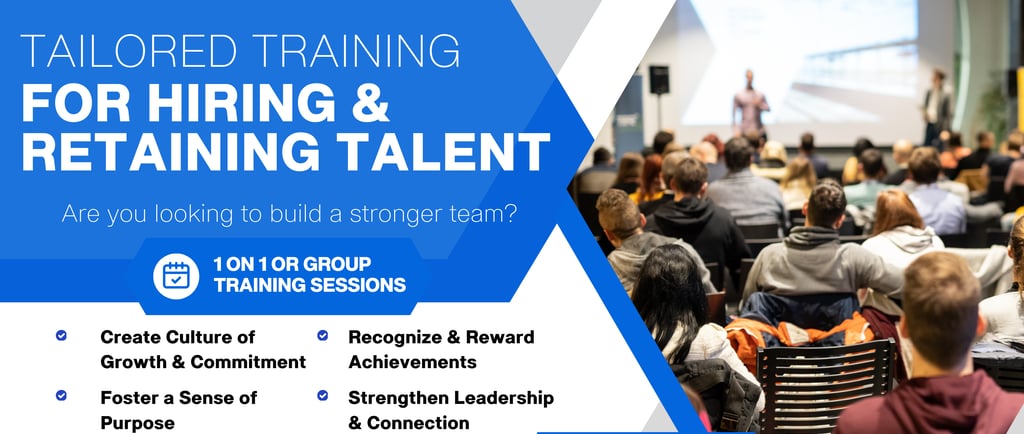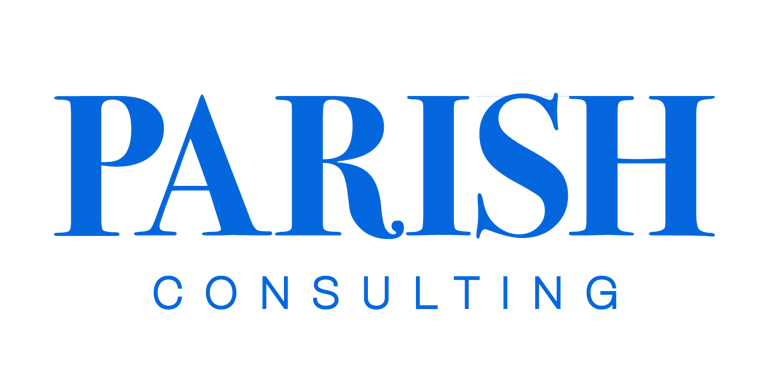Hiring, Retaining, and Motivating Your Employees
I will share some simple tactics that you can implement to help you ensure that you are hiring the right people, as well as how you can support them and keep them inspired.
Mindy Parish
3/1/20256 min read


Simple Tactics for Hiring, Retaining, and Motivating Your Employees
Hiring the right talent is hard. Keeping them engaged and motivated? Even harder.
In today’s competitive job market, businesses struggle with high turnover, disengaged employees, and the ongoing challenge of attracting top talent. Leaders know that a great team drives success—but how do you build and maintain a workforce that is not only skilled but also committed and inspired?
Rather than just discussing these challenges, this blog will provide practical, actionable strategies you can start using right away. Whether you're dealing with high turnover, low engagement, or difficulty finding the right talent, you’ll find real-world solutions to help you build and maintain a strong, motivated team. Expect proven tactics, expert insights, and innovative ideas to create a workplace where employees don’t just show up—they thrive.
Here’s a preview of what we’ll cover:
✅ Hiring: How to attract top talent, refine your hiring process, and ensure you’re bringing in the right people who align with your company’s culture and goals.
✅ Retaining: Strategies to reduce turnover, foster employee loyalty, and create a work environment where people want to stay and grow.
✅ Motivating: Proven ways to keep your team engaged, boost morale, and inspire employees to perform at their best—without relying solely on pay raises or perks.
By the end of this blog, you’ll have clear, actionable steps to build a workforce that’s not just skilled but committed and energized. Let’s dive in!
Hiring the Right Candidate: A Thoughtful, Structured Process
You have an open position, and the pressure is on to fill it quickly. Resumes start pouring in, and after a few promising interviews, you’re tempted to make an offer right away. But hiring isn’t something you rush into—at least, not if you want to get it right.
Think of it like dating. You wouldn’t marry the first person you meet; you’d take the time to get to know them, understand their values, and see if they’re truly a good match for you. Hiring should follow the same principle. While the process doesn’t need to drag on for months, it should be intentional and structured to ensure both the company, and the candidate are set up for success.
Before you even post the job listing, take a step back. If you’re replacing someone, is the role still relevant as originally defined? Companies evolve, and job descriptions should too. If this is a brand-new position, take the time to clearly define expectations. What skills and experience are truly necessary? What kind of personality and work style will fit with your team? A well-thought-out job description sets the tone for the entire hiring process, ensuring alignment from the start.
Then, there’s the question of where to find the right candidates. Not every platform attracts the same talent pool. Are you looking for seasoned professionals, entry-level go-getters, or industry specialists? Choosing the right hiring channels can make the difference between sorting through hundreds of unqualified resumes and finding that one perfect candidate.
But hiring isn’t just about skills and experience. Cultural fit is just as important. Someone might have an impressive resume, but if they don’t align with your team dynamics or company values, it could lead to long-term challenges. That’s why the interview process should be a two-way street. Yes, you’re evaluating the candidate, but they’re also evaluating you. Do they see a future here? Do they feel comfortable with your leadership style?
And don’t forget your existing team. The best hires don’t just fit the role—they fit the people they’ll be working with. If possible, involve key team members in the interview process. Their input can offer valuable insight into whether the candidate will thrive in the existing culture.
The right hire isn’t just someone who checks the boxes—it’s someone who will contribute, grow, and stay. Take the time to get it right, and you won’t just fill a position—you’ll build a stronger team for the long run.
Retaining Top Talent: Creating a Culture of Growth and Commitment
Hiring the right person is just the beginning—keeping them engaged and committed is where the real challenge begins. Employee retention isn’t about luck; it’s about intentionally fostering a workplace where people feel valued, heard, and supported. A strong company culture is the foundation of long-term success.
A negative work environment can drive even the best employees away. Effective communication isn’t just about checking in—it’s about creating clarity, trust, and alignment. Employees want to feel heard, but they also want to understand where the company is headed. Be transparent about company goals, priorities, and challenges. When employees see the bigger picture, they feel more connected to their role and the company’s success.
Regular one-on-one meetings are a great tool—but they shouldn’t be just about work. Take time to connect on a personal level—show you care about their well-being. Ask about their families, interests, career aspirations, and what motivates them. Employees who feel valued as individuals are more likely to stay engaged and committed. When communication flows both ways—leaders sharing vision and employees feeling heard—you create a culture of trust and alignment. Loyalty is a two-way street. When you invest in your employees, they invest in you. Show up as the best version of yourself as a leader, and your team will follow suit.
Compensation matters. Turnover is expensive, and replacing an employee often costs more than retaining them. Offering a fair, competitive salary along with strong benefits signals to employees that they are valued. If your competitors are paying more for the same role, you risk losing great talent.
Retention isn’t just about keeping employees—it’s about helping them grow. Provide opportunities for learning and career advancement.
Ensure clear operating procedures that are regularly updated.
Offer ongoing training and development programs—even if it’s just a refresher.
Empower senior employees to mentor and train new employees.
Create a path for growth—train employees to take on leadership responsibilities, so when you step up, they’re ready to step in.
When employees see a future with your company, they’re more likely to stay.
Employees don’t just leave jobs—they leave environments that no longer support them. Invest in your team, create a culture of trust and growth, and you’ll build a workforce that stays, thrives, and helps your company succeed.
Motivating Your Team: Keeping Energy and Performance High
Keeping your team motivated requires a mix of recognition, growth opportunities, meaningful work, and a strong company culture. Here are some proven strategies to boost motivation and keep employees engaged:
Everyone likes to be recognized in different ways. Build a consistent recognition program that all employees will appreciate. You can show appreciation through verbal recognition, bonuses, or small rewards. Celebrate milestones, wins, and contributions—both big and small. Create a culture of gratitude where employees also recognize each other’s efforts. Offer training programs, mentorship, and skill development to help employees advance. Give employees new challenges and responsibilities to keep their roles exciting.
Create a clear career path so employees see a future within the company. Help them understand how their work impacts the company’s success. Connect individual roles to a bigger mission or company vision. Encourage involvement in meaningful projects that align with their interests.
Build a Positive Work Environment by encouraging open communication and transparency about company goals and challenges. Promote work-life balance through flexible schedules, remote work options, or wellness programs. Create a supportive team culture where employees feel valued and respected.
Empower Employees with Autonomy by giving them ownership over their work—trust them to make decisions. When they make mistakes, coach them through the issue and to identify the impact their decision had and what they could have done differently. Encourage innovation and problem-solving, allowing them to contribute ideas. Avoid micromanagement—empowered employees feel more motivated and engaged.
Lead by example—a motivated leader inspires a motivated team.
Organize team-building activities to strengthen relationships. Offer creative challenges, competitions, or innovation days to spark excitement. Allow employees to work on passion projects or initiatives outside their main role.
Motivation isn’t about one big thing—it’s about consistent small efforts that show employees they matter. Invest in your team’s growth, recognize their contributions, and create a work environment where they feel inspired to do their best.
Bringing It All Together
Hiring the right employees is just the first step—keeping them engaged and motivated is what ultimately drives success. When you take the time to hire strategically, build a culture that fosters long-term commitment, and implement consistent motivation strategies, you create a workplace where employees don’t just stay—they thrive.
Investing in your team isn’t just good for employee morale; it’s good for business. Engaged, motivated employees work harder, perform better, and contribute to a positive, high-performing company culture.
The key takeaway? Be intentional—about who you hire, how you support them, and the ways you keep them inspired. Small, consistent efforts add up to a workforce that is not only skilled but committed, energized, and ready to help your business grow.
Now, it’s your turn—which of these strategies will you start implementing today?
Copyright © 2024. All rights reserved.
